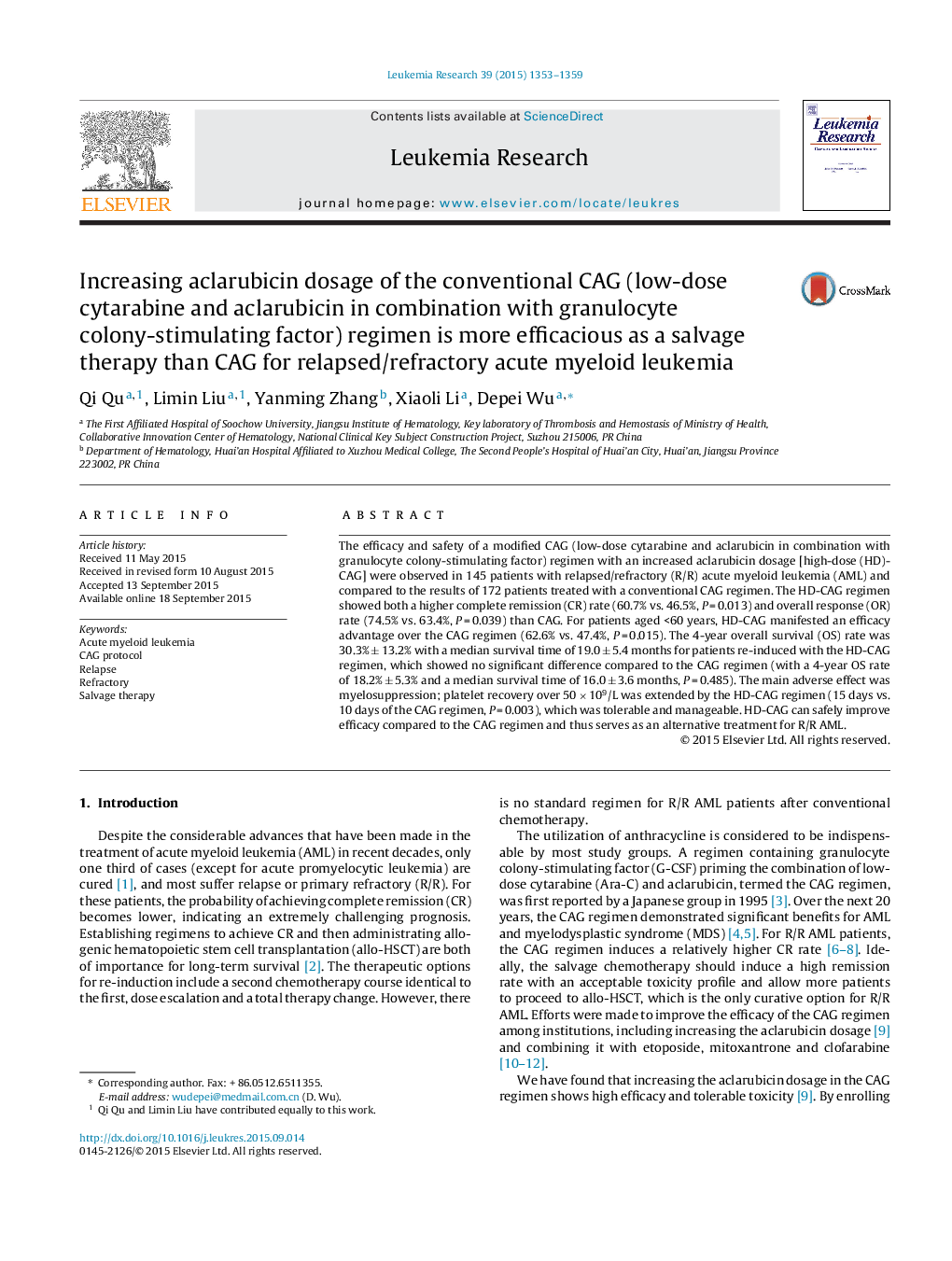| Article ID | Journal | Published Year | Pages | File Type |
|---|---|---|---|---|
| 2136521 | Leukemia Research | 2015 | 7 Pages |
•There is no standard regimen for R/R AML.•HD-CAG regimen can improve the efficacy for R/R AML compared to the CAG regimen.•HD-CAG regimen is more efficient for young patients with R/R AML than CAG regimen.•The overall survival was not improved by HD-CAG regimen.•The main adverse effect of HD-CAG regimen was myelosuppression but tolerable.
The efficacy and safety of a modified CAG (low-dose cytarabine and aclarubicin in combination with granulocyte colony-stimulating factor) regimen with an increased aclarubicin dosage [high-dose (HD)-CAG] were observed in 145 patients with relapsed/refractory (R/R) acute myeloid leukemia (AML) and compared to the results of 172 patients treated with a conventional CAG regimen. The HD-CAG regimen showed both a higher complete remission (CR) rate (60.7% vs. 46.5%, P = 0.013) and overall response (OR) rate (74.5% vs. 63.4%, P = 0.039) than CAG. For patients aged <60 years, HD-CAG manifested an efficacy advantage over the CAG regimen (62.6% vs. 47.4%, P = 0.015). The 4-year overall survival (OS) rate was 30.3% ± 13.2% with a median survival time of 19.0 ± 5.4 months for patients re-induced with the HD-CAG regimen, which showed no significant difference compared to the CAG regimen (with a 4-year OS rate of 18.2% ± 5.3% and a median survival time of 16.0 ± 3.6 months, P = 0.485). The main adverse effect was myelosuppression; platelet recovery over 50 × 109/L was extended by the HD-CAG regimen (15 days vs. 10 days of the CAG regimen, P = 0.003), which was tolerable and manageable. HD-CAG can safely improve efficacy compared to the CAG regimen and thus serves as an alternative treatment for R/R AML.
